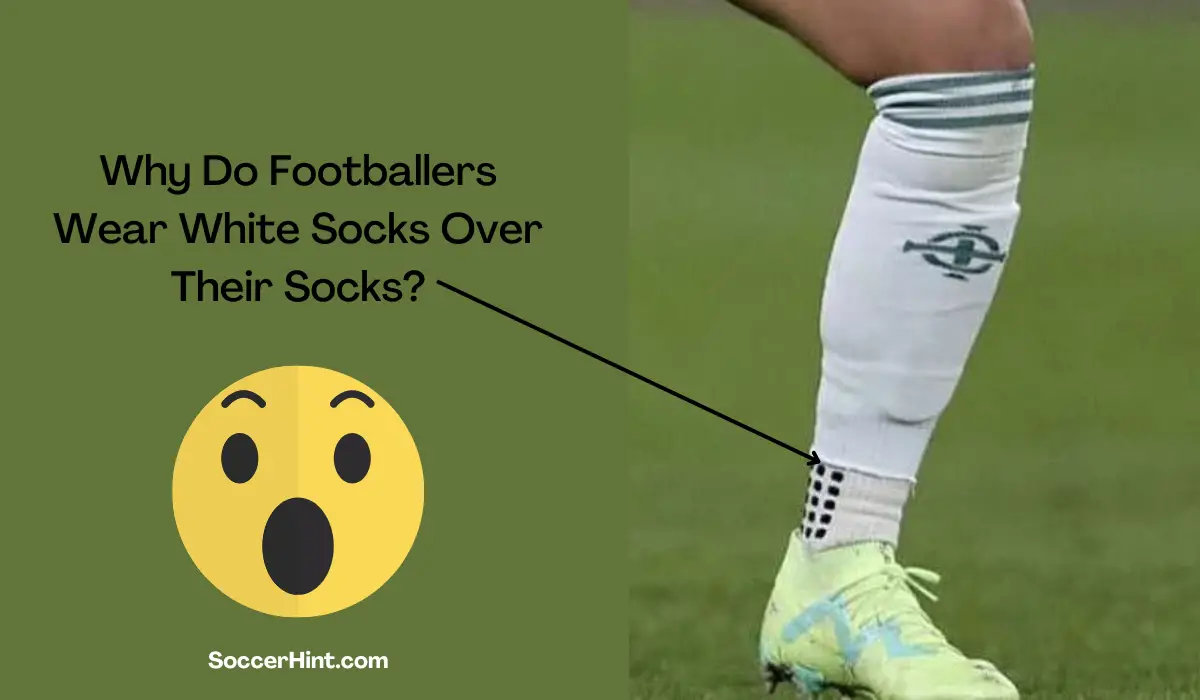In football, every move counts and precision is key. Players often go to great lengths to ensure they have the edge over their opponents. One peculiar sight on the football field is the tendency of footballers who wear white socks over already-worn socks. Why do players do this? This seemingly small detail hides a fascinating aspect of football gear that goes beyond mere aesthetics – the grip socks.
What Is The Grip Socks?
Grip socks, worn by football players over their standard socks, are a specialized piece of athletic gear designed to significantly enhance a player’s performance and comfort on the field. These socks boast a distinctive sole equipped with small rubber grips strategically placed to provide superior traction within football boots. The functional benefits of grip socks are manifold, making them an indispensable part of a player’s kit.
The primary purpose of grip socks is to mitigate the risk of blisters, a common affliction among footballers due to the friction generated by rigorous movements inside their boots. The small rubber grips on the sole offer additional support to the bottom of the feet, preventing unwanted sliding and minimizing the development of painful blisters. Moreover, the padding around the heel adds an extra layer of protection, reducing the impact on this vulnerable area during rapid directional changes.
Scientifically proven to enhance stability, agility, and foot control, grip socks contribute to better overall performance on the field. The absence of the traditional button on these socks serves a tactical purpose, ensuring seamless integration with the player’s boots for enhanced comfort and precision during play.
Made from breathable materials, grip socks also address the issue of sweaty feet, keeping them cool and dry even in the most intense match situations. In essence, grip socks are not just a stylistic choice; they represent a functional innovation that has become an integral aspect of football culture, elevating the game for players at all levels.
Read Also: Difference Between Head Coach and Manager
Brief History of The Grip Socks
The recognition and adoption of grip socks in football gained prominence in the late 20th century. Initially, footballers relied on standard mass-produced socks, which often fell short of providing adequate support and protection. As players began facing common issues like blisters, there was a growing realization of the need for specialized gear. The late 20th century witnessed the inception of grip socks, introducing small rubber grips on the sole as a solution to enhance traction and stability within boots.
With advancements in biomechanics and sports science, professional players, always at the forefront of adopting innovations, started integrating these specialized socks into their kits. As the benefits became apparent, the trend disseminated to all levels of the sport. The late 20th century marked a pivotal time in the history of grip socks in football, representing a significant leap in the continual quest for optimal gear to enhance both performance and player well-being on the pitch.
Read Other Interesting Articles
- Wing-Back In Football: The Comprehensive Guide To the Position

- Why Zidane Retired: Real Reason Revealed

- Why Women’s Football Is Better Than Men’s: Debunking Stereotypes

- Why UEFA Conference League: Analyzing The Need

Why Do Players Cut Off The Buttom Of A Grip Socks?
Footballers cut off the bottom of grip socks as a strategic modification to optimize their performance on the field. The intentional removal of the bottom part, often including the button found on standard football socks, serves to eliminate any potential discomfort or interference during play.
This tactical decision ensures a seamless integration of the grip socks with the player’s boots, creating a sleek and streamlined fit. By customizing the socks in this manner, footballers enhance the overall aesthetics of their kit while prioritizing functionality.
The absence of excess material at the bottom allows for better control, minimizing any potential disruptions and maximizing the player’s ability to execute precise movements with ease. In the fast-paced and precision-driven world of football, this seemingly small adjustment reflects the commitment to achieving optimal performance and comfort on the pitch.
Read Also: What Do Football Players Wear Under Their Jerseys?
Conclusion
Now, it is clear why footballers do wear white socks over their socks. The practice is fundamentally rooted in the functional advantages offered by grip socks. The deliberate choice to utilize these specialized socks, featuring small rubber grips on the sole, addresses common issues such as blisters and discomfort associated with standard, mass-produced football kit socks. By providing additional support, reducing friction, and enhancing stability, grip socks have become an indispensable part of a footballer’s gear.
Looking ahead, it is likely that the trend of footballers wearing white socks over their socks will persist and evolve. As advancements in sports science and technology continue, we can anticipate further innovations in the design and materials of grip socks. These improvements may aim to enhance breathability, durability, and overall performance, contributing to the ongoing quest for optimal gear on the football field.
Additionally, the adoption of grip socks may become even more widespread across various levels of the sport, as players and teams increasingly recognize the tangible benefits these socks offer in terms of injury prevention, comfort, and improved gameplay. The future of football gear, as symbolized by the choice of wearing white socks over regular ones, is poised for continuous refinement, ensuring that players stay at the top of their game while prioritizing both functionality and comfort.





